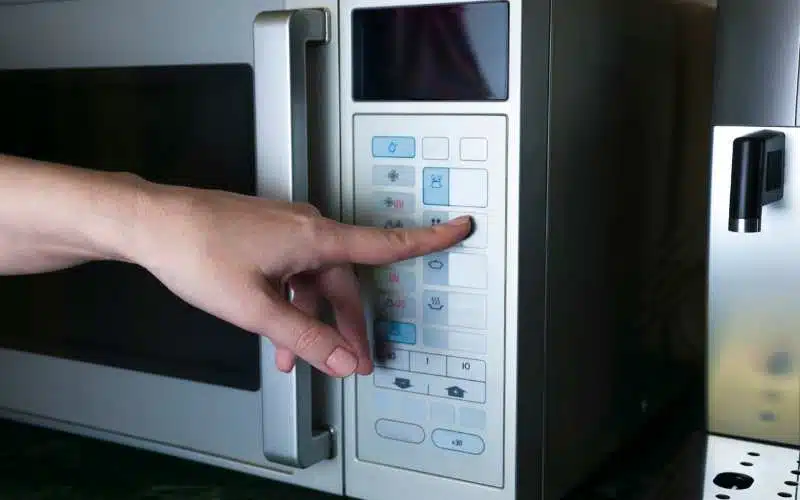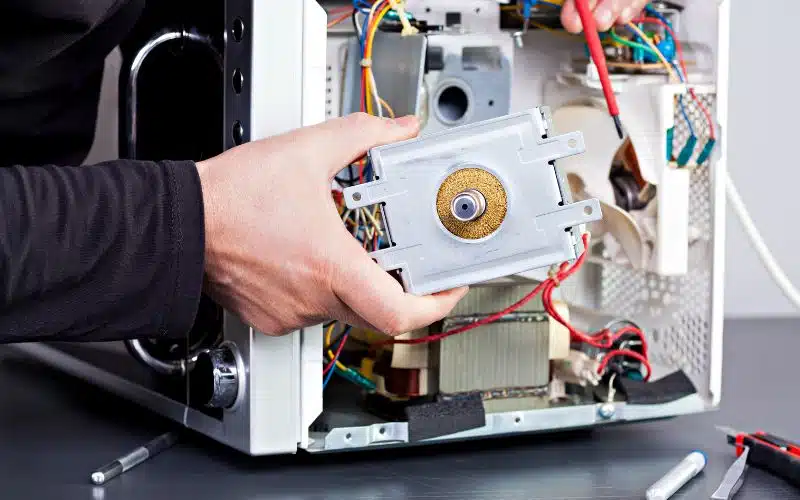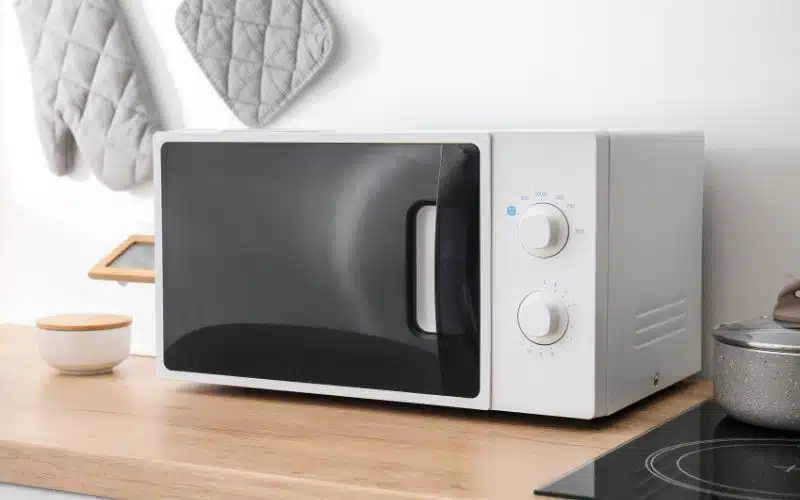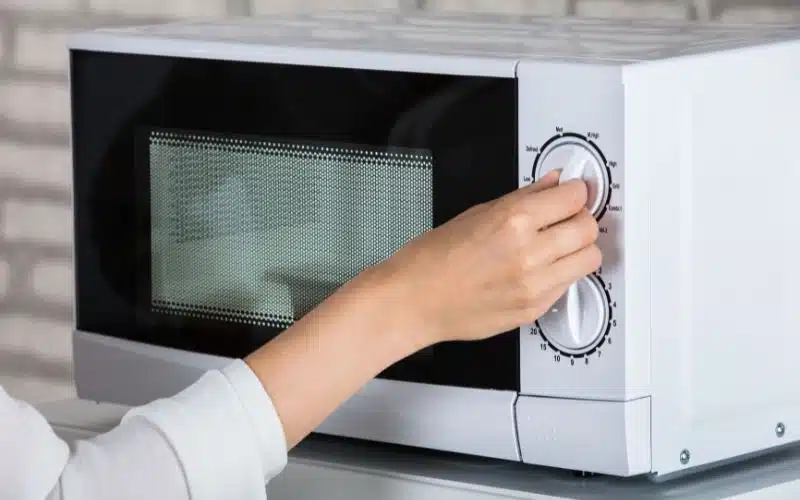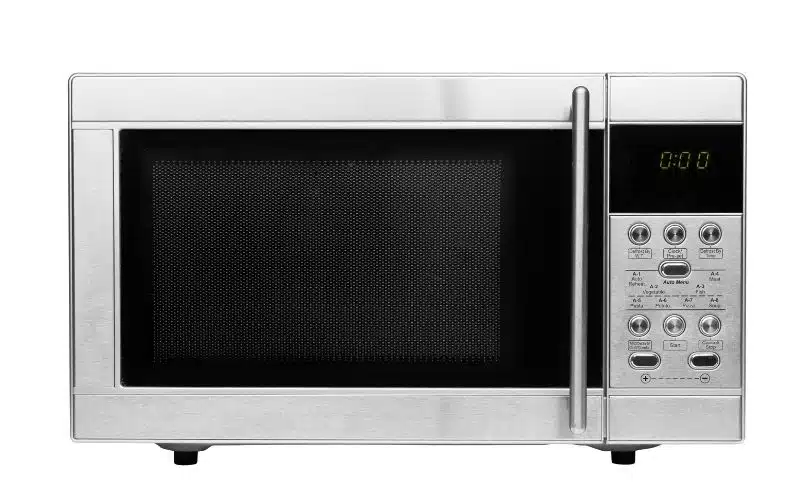Did your microwave catch fire recently? Are you left wondering if you can continue to use it? Sometimes, the materials we use in the microwave can result in a fire outbreak; at other times, it can be due to an electrical problem.
Whatsoever the case may be, once your microwave catches fire, you begin to wonder if it’s safe to use.
Yes, you can use your microwave after it catches fire as long as the food you’re microwaving catches fire, not something else like the wires in it. If the wires are affected, it is risky to use, so it’s best to consult a technician if it’s still safe for you to use. It’s best to access the fire before use.
In this article, I will explain why your microwave catches fire and what you can do after it. Also, how to use it safely after the fire outbreak.
By the end, you’ll know the causes, what to do after a fire outbreak in your microwave, and if it’s safe to use.
Can You Still Use a Microwave If It Caught Fire?
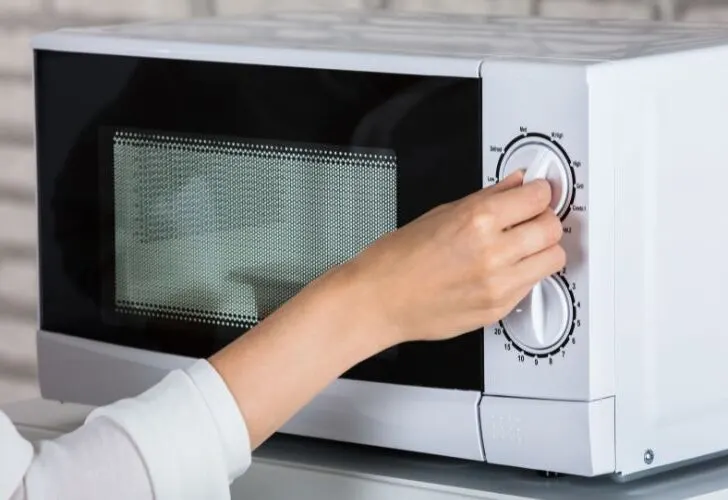
Yes, you can still use your microwave after it catches fire. However, this depends on the result of the fire.
For example, if, after the fire outbreak, you discover that the cords and wires are affected, it is no longer safe to use.
However, if nothing seems damaged in the microwave apart from its food, it’s safe to use. You only need to properly clean the microwave before using it.
Although sometimes, even after properly cleaning the microwave, you still encounter a spark after using it. That is because the carbon trail is still in the microwave leading to the spark.
So, before concluding that it is safe to use a microwave after a fire outbreak, check for the severity of the fire. Check if the fire is mild, serious, or severe to know what to do after the fire outbreak.
Here’s how to differentiate between the microwave fire in the table below.
| Mild Fire | Serious Fire | Severe Fire |
|---|---|---|
| The presence of smoke before or fire the fire. | The microwave itself gets burnt. | The microwave, wire, and cord get damaged. |
| The material in the microwave gets damaged. | The fire spreads out of the microwave to the room. |
Now, you can identify which category the fire in your microwave falls into. You can then know the next thing to do; if you can use your microwave or not.
If it’s a mild fire, it’s safe to use your microwave, but in other cases, it’s dangerous to use your microwave. In some cases, you might need to dispose of the microwave.
In any case, it’s best to assess the fire before using it to avoid further damage to your appliance and your home.
I recommend consulting a technician to check your microwave after a fire to know if you can use it. Your life and property are at risk if you take the wrong step.
Why Will a Microwave Catch Fire?
There are several reasons your microwave can catch fire. It can be a result of an electrical fault or the microwave itself.
Here are some possible reasons your microwave catches fire;
- Overheating food.
- Packaging.
- Electrical Issues.
#1. Overheating Food
Overheating food in the microwave can lead to a fire outbreak. As with the stove, or grill fire, fire outbreaks can also occur in a microwave.
If you add extra time to the food in the microwave with little moisture, a fire can occur after the moisture dries up.
Your microwave uses radiation to heat the food in it. So the radiation absorbs the food’s moisture, and if the moisture dries up, there’s nothing left to absorb.
Then the food starts to overheat, resulting in smoke coming out of it. From the smoke, it graduates to fire.
#2. Food Packaging
The packaging of your food also matters when using a microwave. There are materials you use for packaging our foods that aren’t microwave-safe.
When you use these materials in the microwave, it can result in a fire outbreak in your microwave. For example, you pack food in brown paper or styrofoam.
These materials aren’t microwave-safe, and when you use them, they cannot stand the heat, resulting in a fire. So, it’s best to ensure you use microwave-safe materials to avoid this problem.
Another way your food packaging can result in a fire outbreak is if it gets stuck close to the wave emitter in the microwave.
This way, the heat will be focused on the packaging rather than spread evenly. The package will receive more heat than it can handle, resulting in overheating and a fire outbreak.
#3. Electrical Issues
As with any other electrical appliance, an electrical issue with your house can result in your microwave catching fire.
If there’s a power surge in the power outlet, it can result in turning on the microwave. If you do not notice this on time and it keeps running, it can result in a fire.
A short circuit can happen in the microwave and damage the cable leading to a fire outbreak.
What Do I Do After a Microwave Catches Fire?
After your microwave catches fire, you immediately turn it off and put off the fire before doing a clean-up of your microwave.
You can clean up if it’s the type of fire that doesn’t damage your microwave. Immediately you spot a fire, turn off the microwave and your power outlet to disconnect it from the power supply.
Next, put off the fire in your microwave. If it’s a small fire, open the microwave and put the fire off by dousing it with water.
If the cause of the fire is oil, do not use water to put off the fire. Instead, use baking soda or a fire extinguisher to put off the fire.
Also, if you notice that the fire is from the microwave and not what is inside, put off the fire with baking soda. You can also use a fire extinguisher to put it off.
If you can put off the fire successfully, then it’s time for you to clean the microwave so you can use it or get it examined by a technician.
Likewise, if you cannot put off the fire in the microwave, leave the kitchen and call the fire department for help.
After putting off the fire, if you discover the fire is due to an electrical issue, you need to get rid of the microwave.
How to Clean Your Microwave After a Fire
After putting the fire off in your microwave, you must do a clean-up. Depending on the severity of the burn, there are three ways to clean your microwave.
- Use dryer sheets.
- Use a sponge.
- Use vinegar.
#1. Use Dryer Sheets
If the burn is mild, make a mixture of soapy water, and soak a towel to absorb the water. Place the towel in the microwave on the burns in it.
Allow the towel to sit there for a few hours until you see the burn gradually peeling off. Then, use the dryer sheets to clean the rest of the burn.
#2. Use a Sponge
Use this method if there’s still soot in the microwave after using the dryer sheets. Soak your sponge in vinegar.
Sprinkle baking soda on the sponge and place it in the microwave; then, microwave it for 30 seconds. Use the sponge to clean the burn in the microwave.
Repeat this process until the burn is gone, and keep adding vinegar and baking soda. Do not use an abrasive sponge for this.
#3. Use Vinegar
Put white vinegar in a microwave-safe bowl and place it in the microwave for 10 minutes on high heat.
Then leave it to sit and cool in the microwave for 15 minutes. This steam will cut through greasy sediment in your microwave.
Is It Okay to Use a Microwave after a Spark?
It depends on the cause of the spark. If the spark is because of a metal piece in the microwave, it’s okay to use it, but if it’s due to electrical issues, then it’s not okay.
The first thing you should do when you notice a spark in your microwave is to turn it off so it doesn’t result in further damage to your microwave.
If this spark occurs regularly in your microwave, it isn’t safe to use. It’s best to take it to a technician so they can check what the cause is and if it’s safe for you to use.
Final Thoughts
You can use your microwave after it catches fire if it’s mild and not caused by electrical problems.
To avoid a fire outbreak in your microwave, always use microwave-safe bowls and avoid overheating foods.
However, it’s best to consult a technician before using your microwave again after a fire to prevent further damage.
References:
